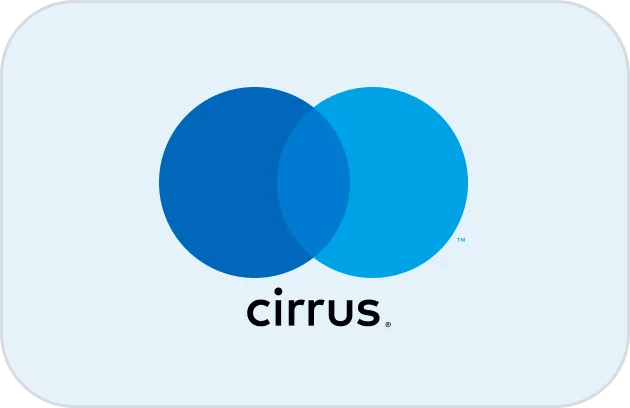Global teams don’t scale on “a phone system.” They scale on a toolchain—edges, trunks, codecs, policies, analytics, and workflow glue that keep calls clear, compliant, and coachable from Manila to Manchester. Below is a field-tested catalog of 100 VoIP tools/capabilities that reduce tickets, minutes, and churn while lifting answer rate and FCR. Use it as a shopping list, an RFP spine, and a modernization roadmap. When you need the underlying blueprint for a worldwide dial tone without closets, see this global phone system approach; for keeping the lights on when traffic surges, study the patterns that turn lag into zero downtime.
| Tool / Capability | What It Unlocks for Remote Teams | Metric It Moves |
|---|---|---|
| WebRTC softphones | Laptop headset dialing without VPN/desk phones | Time-to-activate ↓ |
| Zero-touch provisioning (QR/SCEP) | Instant endpoint setup across time zones | Tickets/seat ↓ |
| Elastic SIP trunking | Scale minutes with usage; avoid fixed commits | Carrier spend ↓ |
| Multi-carrier failover | Survive regional outages automatically | Downtime ↓ |
| Anycast SBC edges | Shortest path media for roaming staff | MOS ↑ |
| OPUS/WB codec policy | Quality under jitter/loss on public internet | Redials ↓ |
| QoS-aware SD-WAN | Voice prioritization on commodity links | AHT ↓ |
| E2E TLS/SRTP enforcement | Secure transport without custom VPNs | Audit risk ↓ |
| STIR/SHAKEN attestation | Trusted caller ID; fewer declines | Answer rate ↑ |
| Branded caller ID | Logo/brand on inbound screens where supported | Connects ↑ |
| DID lifecycle manager | Retire zombies; right-size number pools | $ per DID ↓ |
| Per-country DID pools | Local presence without local offices | Pickup rate ↑ |
| Dynamic E911/112 | Compliant emergency routing for remote workers | Liability ↓ |
| Policy-based call recording | Who/when to record by line/region | Fines ↓ |
| Automatic redaction | DTMF/PAN/PII scrubbing without human effort | Compliance toil ↓ |
| Object storage for media | Cheap, durable recordings with lifecycle rules | $ per GB ↓ |
| Residency controls | Keep media in-region for GDPR/PDPA/HIPAA | Audit pass ↑ |
| Immutable audit logs | Provable access trails for regulators | Investigations ↓ |
| Softphone SSO/MFA | Fewer resets; faster onboarding | Time-to-first-call ↓ |
| Device posture checks | Block calls on risky laptops | Security incidents ↓ |
| Hoteling/hot-desking | Shared endpoints for hybrid offices | CapEx ↓ |
| API-first IVR | Edit prompts/routes in minutes, not tickets | Change lead time ↓ |
| NLP entry (short IVR) | “Say what you need” → intent captured fast | AHT ↓ |
| Windowed callbacks | Promise-keeping without overstaffing | Abandon ↓ |
| Priority re-queue | Callback honors window at top of stack | CSAT ↑ |
| Stickiness timer | Keep caller with best-fit agent until timeout | FCR ↑ |
| Entitlement routing | Premium/at-risk skip general queues | Churn ↓ |
| Language detection | Auto-route to fluent agents | Transfers ↓ |
| Geo/number compliance rules | Respect local call/recording laws by default | Legal risk ↓ |
| IVR “status-first” mode | Outage prompts before agents | Spikes ↓ |
| Co-browse escalation | Fix complex web issues faster | AHT ↓ |
| Screen pop (CRM) | Auto-context on connect | Handle time ↓ |
| Click-to-call SDK | Embed dial in product; no app switching | Conversion ↑ |
| Voicemail transcription | Scan and triage asynchronously | First response ↓ |
| Automated wrap codes | Consistent dispositions for analysis | Data quality ↑ |
| Live sentiment signals | Supervisors spot issues in real time | Saves ↑ |
| Toxicity/profanity flags | Protect agents; escalate with proof | Attrition ↓ |
| Silence/overlap detectors | Coach pacing; find dead-air scripts | AHT ↓ |
| Queue health widgets | Intraday ASA/abandon/occupancy | WFM accuracy ↑ |
| Forecast by interval | Staff 15-min buckets, not days | Abandon ↓ |
| Adherence tracking | See shrinkage and no-shows early | Service level ↑ |
| Coach-in-call sidebars | Prompts/scripts without alt-tab | FCR ↑ |
| Snippet libraries | Approved replies by product/region | Variance ↓ |
| Real-time QA pre-scoring | Prioritize which calls humans review | QA coverage ↑ |
| A/B routing tests | Prove policy changes quickly | FCR/CSAT ↑ |
| Call quality heatmaps | Spot bad ISPs/regions fast | Redials ↓ |
| MOS anomaly alerts | Trigger fixes before the queue screams | Incidents ↓ |
| End-to-end synthetic calls | Prove flows 24/7; catch regressions | MTTD ↓ |
| Circuit breakers (routing) | Auto-disable failing paths | MTTR ↓ |
| Change calendar + flags | Ship safely across time zones | Change failures ↓ |
| Feature flags for IVR | Gradual rollout of prompts/menus | Rollback speed ↑ |
| One global dial plan (Git) | Code-reviewed changes, single truth | Errors ↓ |
| SIP normalization templates | Carrier quirks abstracted once | Stability ↑ |
| TOS/DSCP enforcement | QoS that survives the WAN | MOS ↑ |
| Codec fallback rules | Graceful degrade under loss | Call drops ↓ |
| Headset diagnostics | Fix mic/input issues remotely | Tickets ↓ |
| VDI audio redirection | Keep audio local in virtual desktops | Lag ↓ |
| Dual-path VPN bypass | Voice direct-to-edge; data via VPN | Jitter ↓ |
| eSIM/4G backup links | Home-office failover for leaders | Continuity ↑ |
| Power user bandwidth caps | Stop video/apps starving voice | MOS ↑ |
| Auto-timezone normalization | Correct timestamps across 50+ countries | Analytics trust ↑ |
| Work type states | Accurate occupancy (talk/aftercall/admin) | Staffing accuracy ↑ |
| Call tagging (product/intent) | Join to revenue, refunds, saves | Exec clarity ↑ |
| Event streaming to warehouse | Reproducible KPIs across the stack | Data disputes ↓ |
| Bot handoff reasons | Fix self-serve flows weekly | Containment ↑ |
| Number reputation monitor | Detect “spam likely,” rotate CLIs | Answer rate ↑ |
| Consent prompts per locale | Right notice for right region | Fines ↓ |
| Record-on-demand hotkeys | Respect sensitive moments | Trust ↑ |
| TOS-informed jitter buffers | Adaptive smoothing in-app | MOS ↑ |
| Sidetone/AGC controls | Agent audio comfort for long shifts | Fatigue ↓ |
| Whisper/barge monitoring | Coach live without escalation | FCR ↑ |
| Supervisor wallboards | What matters now on one screen | Interventions ↑ |
| Agent self-diagnostics | Preflight mic/speaker/network | Failed calls ↓ |
| Timeboxed warm transfers | Prevent hold purgatory | Handoffs/resolution ↓ |
| Call parking/park orbit | Move live calls between devices/sites | Flexibility ↑ |
| Skill decay alerts | Spot agents who need refreshers | QA scores ↑ |
| “Next best action” nudges | Guide compliance/retention moves | Saves ↑ |
| Playbooks by intent | One-page checklists in-call | Variance ↓ |
| Exportable raw CDRs | Independent audit & BI joins | Trust ↑ |
| Per-agent MOS history | Correlate quality with performance | Coaching ROI ↑ |
| Queue-based SLAs | Different targets per value tier | Premium CX ↑ |
| Huntlist to queue migration | Stop missed calls & guessing | Abandon ↓ |
| Callback scheduling UI | Customer chooses window; fewer no-shows | CSAT ↑ |
| Recording retention by case type | Only keep what you must | $ per month ↓ |
| Auto-language IVR | Detect locale from CLI or choice | CSAT ↑ |
| SMS deflection for updates | Proactive ETAs, outages, deliveries | Inbound volume ↓ |
| VoIP push notifications | Mobile agent ringing without battery drain | Reachability ↑ |
| Presence sync (calendar/IM) | Route away from meetings | Transfers ↓ |
| HD voice interop | WB between carriers/devices | NPS ↑ |
| SIP OPTIONS keepalives | Detect dead paths fast | MTTD ↓ |
| NAT traversal aids (ICE/TURN) | Stable media behind home routers | Call drops ↓ |
| Tone detection (fax/IVR) | Route non-speech cleanly | AHT ↓ |
| CLI-based business hours | Locale-specific open/close prompts | CX consistency ↑ |
| Holiday routing calendars | Automate peak changes globally | Errors ↓ |
| Agent device hopping | Seamless switch laptop→mobile | Flex ↑ |
| SBC TLS mutual auth | Harden trunk edges | Fraud ↓ |
| Fraud detection (high-cost) | Block suspicious international bursts | Loss ↓ |
| Rate limit policies | Stop script storms or misconfigs | Stability ↑ |
| Number pooling by campaign | Protect reputation; track performance | Answer rate ↑ |
| Agent assist tips | Surfaced steps during calls | FCR ↑ |
| Distraction-free UI mode | Hide nonessential panels while talking | AHT ↓ |
| Auto device gain control | Normalize volumes across headsets | Repeat asks ↓ |
| Call merge/conference | Pull experts in fast | One-call resolve ↑ |
| DTMF fallback (RFC2833) | IVR key reliability on lossy paths | Retries ↓ |
| Global announcement library | Legal/regional messages from one source | Consistency ↑ |
1) Architecture First: Why Global VoIP Is a System, Not a SKU
Remote teams succeed when “voice behaves like software.” That means active/active edges close to users, elastic trunks that survive incidents, codecs chosen for their networks, and a single dial plan in code. Build reliability in layers—Anycast ingress, circuit breakers on routes, and synthetic calls that cross your stack every hour. When you go beyond PBX into intelligent call flows, copy the contact-center hardening used to eliminate downtime so your softphone is as dependable as a landline.
2) From SIP to AI: The Toolchain That Future-Proofs Voice
Voice isn’t just RTP packets anymore; it’s signals. Live intent, sentiment spikes, compliance events, and next-step verification are all machine-detectable. The arc from SIP primitives to assistive AI is mapped here: the future of cloud telephony. Use AI for summaries, wrap codes, and coach-in-the-moment guidance—then protect agents from bad automation by keeping policy-restricted zones for sensitive calls. When you want outcomes you can prove, wire the same events model leaders use in service ops.
3) Reliability & Compliance Across 50+ Countries
Scaling globally adds constraints: residency, consent, emergency calling, and number reputation. Solve those with defaults—policy-based recording, automatic redaction, per-locale consent prompts, and dynamic E911/112. For strict regimes (UK/EU), the GDPR-proof playbook keeps you from re-litigating basics. Canada/US need survivability: carrier diversity, regional edges, and fast failover; the reliability & data compliance guide shows the pattern.
4) Workflow Glue: Integrations That Remove Swivel-Chair
VoIP doesn’t live alone. Connect dial tone to CRM, WFM, knowledge, and QA so agents don’t copy/paste data or chase status by hand. Use the catalog of 100 call center integrations as your short list: screen pop from CRM, “next best step” from knowledge, callback windows into calendars, and warehouse joins that make exec metrics reproducible. When your flows get richer, route by predicted intent/value—see predictive routing for the logic to reuse in service and sales.
5) 120-Day Playbook to Stand Up Global VoIP
Days 1–14 — Map & Mirror. Inventory DIDs, carriers, regions, and emergency lines. Spin a parallel cloud tenancy; mirror IVR flows; baseline MOS/answer/AHT. Choose softphone + SSO, and light up multi-carrier trunks with health checks.
Days 15–45 — Stabilize & Simplify. Enforce TLS/SRTP, enable OPUS/WB, add windowed callbacks and stickiness timers, and shift ring groups into SLAd queues. Export raw events to your warehouse; publish intraday and cohort views built from events.
Days 46–90 — Make It Global. Add residency, consent prompts, and dynamic E911. Create per-country DID pools and reputation monitoring. Swap closet SBCs for Anycast edges. Move recordings to object storage with lifecycle rules.
Days 91–120 — Prove & Coach. Tie call outcomes to revenue/refunds/saves, then add coach-in-the-moment nudges. For audit coverage at scale, adopt AI-first QA as described in ending manual QA, and extend guidance to reps via real-time coaching.
6) Measure What Matters: The Four Views Leaders Trust
Dashboards don’t convince; reproducible metrics do. Use four lenses: (1) Intraday (ASA, abandon, callback kept, MOS anomalies), (2) Cohort (AHT/FCR/CSAT by intent/channel/region), (3) Quality (QA coverage, behaviors, policy adherence), and (4) Business (revenue/contact, refunds avoided, saves). Steal the KPI set from these 50 metrics so execs stop asking, “Are the numbers right?” and start asking, “What do we change today?”
FAQs — Short Answers That Keep Global Voice Stable
What proves a VoIP stack is ready for 50+ countries?
Active/active edges, multi-carrier trunks with circuit breakers, OPUS/WB on lossy links, dynamic E911/112, per-locale consent, object storage with residency, and events streaming to your warehouse. If you can reproduce MOS/ASA/AHT from raw events, you’re ready to scale.
How do we keep answer rate high on outbound?
Combine STIR/SHAKEN, branded CNAM, and number reputation monitoring with per-campaign DID pools. Rotate CLIs before carriers flag them. Use windowed callbacks to convert voicemail tag-backs. Tie answer rate to revenue/contact in your business view to prioritize fixes.
Where should we start if we still have on-prem PBXs?
Stand up a parallel cloud tenancy, port a non-critical site first, migrate IVR to API-first, and move recordings to object storage with retention rules. Then decommission closets progressively. For the broader migration plan, align stakeholders with this PBX migration guide.
What’s the simplest change with the biggest global impact?
Turn on windowed callbacks and enforce stickiness timers. These two moves cut abandon, shrink AHT variance, and raise CSAT—no new headcount required. Pair with Anycast edges + OPUS to stabilize MOS across home networks.
How do we route smarter without a full contact center?
Adopt entitlement routing, language detection, and short NLP IVR. You’ll reduce transfers and speed resolution. When you’re ready to go beyond PBX into omni flows, the same logic powers modern call center software and predictive policies.
What’s our operating cadence once this is live?
Daily: queue health (ASA/abandon/callback kept/MOS). Weekly: cohort AHT/FCR/CSAT by intent/region; promote script changes. Monthly: business view—revenue/contact, refunds avoided, saves—and retire integrations that don’t move outcomes. Use proactive status comms to prevent avoidable load; when support expands, study customer-loss prevention patterns.
Close: The right “VoIP tools” are really a reliability + compliance + coaching system. Start with edges and trunks, enforce secure defaults, wire event streams, and give agents prompts that keep calls short and successful. Tie it all to the same metrics leadership uses in service, and your remote team won’t just sound local—they’ll operate local, everywhere.








